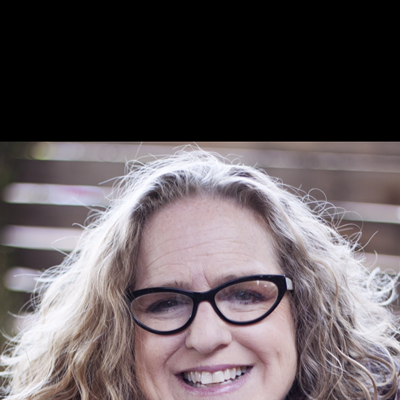Tom Simplot, administrative assistant to County Supervisor Betsey Bayless, confirms that county management has asked Dr. Harvel Alishouse to resign his position as director of the county's rabies and animal-control division. County Manager Roy Pederson did not return calls from New Times, but other sources in county government confirmed that Alishouse has been asked to resign.
Alishouse refused to comment on the status of his employment.
The bone of contention is the latest draft of a pet overpopulation ordinance authored by Alishouse and his staff. Alishouse says he forwarded the draft ordinance to deputy county manager Don McDaniel a couple of weeks ago.
Apparently, the draft ordinance is not tough enough for animal-rights activists, including Bayless, who are raising questions about the county's authority to enforce such an ordinance in the first place. They say changes in state law are needed before the county adopts stiffer pet regulations.
Meanwhile, animal owners and breeders--who raised a ruckus in August during a series of seven public hearings on an earlier draft ordinance--want Alishouse's milder version of the ordinance to move forward.
Some provisions of the ordinance that were floated in August created a furor, particularly those that strayed away from the primary issue at hand: pet overpopulation. One proposal would have required anyone owning more than four dogs to meet the standards required for a commercial kennel. Another would have required daily washing of dog-food dishes in certain instances.
Simplot recalls one provision that didn't even make it into the August draft: a $15 fee for dropping a stray cat or dog at the pound.
"That's indicative of how truly irrational so many of the provisions were," he says.
After the August hearings, Alishouse was directed to take public testimony into account and draft a new version. That, Alishouse says, is just what he did. "We did our staff work after the public meetings and sent it to county management for review," Alishouse says. "I've not received any instructions to move ahead with it, and as far as I know, it's still there." Alishouse refuses to comment on the mysterious new draft document, other than to say, "We narrowed down the interpretation of the county Board of Supervisors' authority . . . and took into consideration public comment."
Deputy county manager McDaniel won't release a copy of the latest draft. (He also refuses to confirm the request for Alishouse's resignation.) "I haven't even reviewed it thoroughly myself. . . . It's like a very draft document. Staff is still looking at it," McDaniel says.
Simplot says he read the draft and recommended that Bayless stop its public release. "It was completely gutted. There was nothing in there about pet overpopulation," Simplot says. In fact, he says, there's not much of anything. Even a provision calling for voluntary cat licensing--which all sides in the debate liked, according to Simplot--was removed.
Simplot and McDaniel say that one of the reasons the process has been put on hold at the county level is because many of the proposed methods to control overpopulation were not legal in Arizona. Incredibly, such a possibility didn't occur to anyone until quite recently, when the County Attorney's Office rendered the opinion that state law would have to change before the county could implement such methods. The lawyer for the county attorney who handled the issue, Mike Law, was not available for comment.
Bayless says consideration of state law "should have been done at the very start." She and Simplot blame Alishouse and his staff for overlooking it.
But Liz Lopez, chairman of the Rabies Animal Control Advisory Council, says she and Alishouse met with Bayless a year ago and "warned her that there were going to be legal problems."
Stephanie Nichols-Young, an attorney who represents a coalition of 17 animal-rights groups, says she and her clients plan to fight to change the law this year at the state legislature.
Bayless describes the pet ordinance process as "at a dead standstill."
That prospect upsets members of the Arizona Dog Council, a group of breeders who believe Bayless and animal-rights activists are bent on placing draconian measures on pet owners. The Dog Council wrote to its members this month, urging them to contact county supervisors and speak up for Alishouse's latest draft ordinance. "Only those areas where a consensus agreement was achieved . . . were included in the final revision" of the draft ordinance, the letter states. "The Dog Council has not seen the revision, but we have been assured that what it contains are items we could readily support."
Mildred Gleason, the Dog Council's treasurer, says, "Bayless is the one who has apparently suggested that this shouldn't go any further. And we think it is atrocious that one supervisor can so dominate" the process.
In its letter to members, the Dog Council writes, "The County asked for and got wide public input. . . . The final revision reflects the will of the public. We did our part . . . and now we DEMAND that the final product be released and voted on by the Board of Supervisors, as promised." Councilmember Ed Beakley adds that he and others are outraged by news that Alishouse is in the doghouse.
"He has done everything the county has asked him to do," Beakley says. "He has done everything on time and in the manner they instructed him and I don't know why he's being pressured out." Even Nichols-Young, who does not want Alishouse's draft to advance, says "I'm not sure Alishouse is the guy who deserves to be taking the fall for this." She is convinced that other county officials are responsible for some of the confusion. Nichols-Young adds, "I don't agree with him [Alishouse] on everything, but I don't think this is anything that he engineered on his own.











